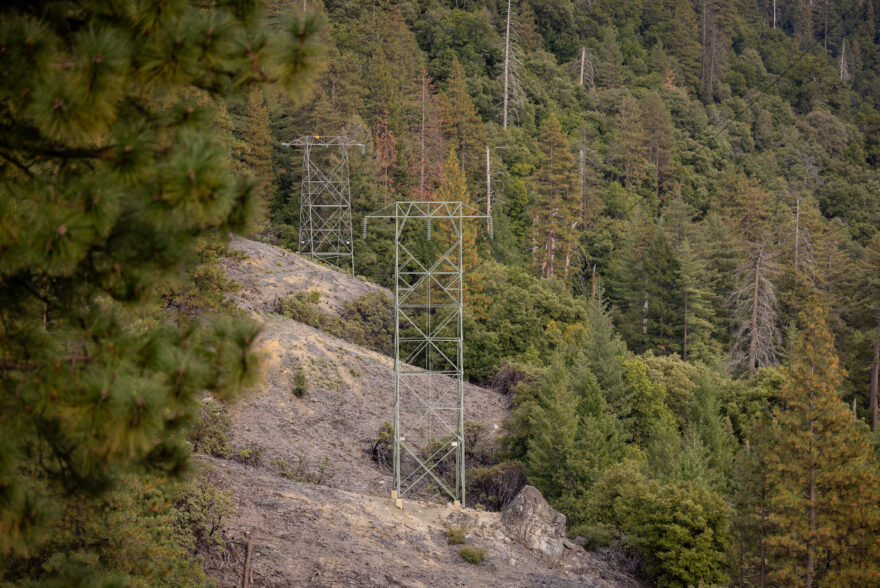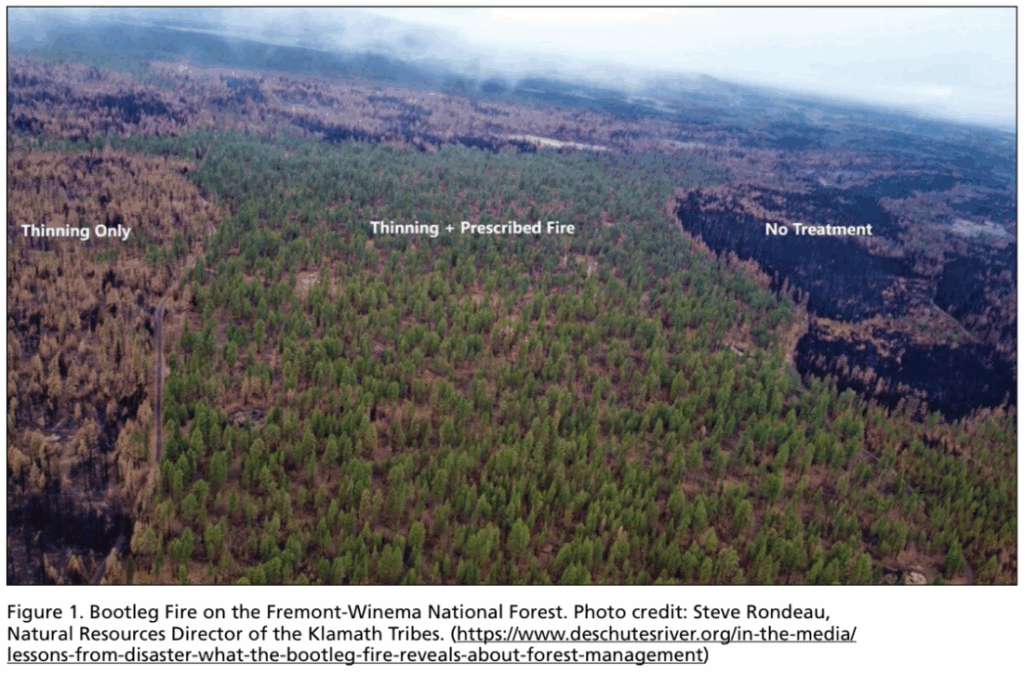Why Utilities Are Paying Attention to Forest Health: Blue Forest Publishes in The Water Report


Wildfire is an increasingly urgent threat to water systems across the Western United States.
As wildfires increase in size, frequency, and severity due to overgrown forests, legacy fire suppression, and extreme weather, communities and utilities alike face escalating threats. For water utilities, these threats risk service continuity, infrastructure integrity, and financial stability. Blue Forest team members authored an article, Megafire Resilience: Bridging Forests, Water, and Utilities, which is featured in the April 2025 edition of The Water Report, a monthly publication offering in-depth and expert analysis of water challenges and solutions. The article outlines how strategic forest management can significantly reduce wildfire risks and protect critical water and energy infrastructure for utilities, particularly in the Western United States.
Half of all surface water in the conterminous United States originates in forested areas, and 89% of public water suppliers rely on these forests for at least part of their supply.
Forests in the Western U.S. serve as vital natural infrastructure. They store snowpack, filter water, reduce runoff, and stabilize soils, playing an essential role in securing clean and reliable water supplies. Severe wildfires that burn through forested landscapes disrupt these functions, leading to faster snowmelt, degraded water quality, increased sedimentation in reservoirs, and risks to hydropower systems. Post-fire rainfall can worsen these effects, causing erosion, landslides, and damage to infrastructure. Utilities and significantly affected by these impacts, incurring enormous expenses to repair systems, treat water, and maintain service delivery under stress.
While important, traditional utility wildfire mitigation strategies—such as burying power lines or clearing vegetation near transmission corridors—are expensive and limited in scope. Proactive, landscape-scale forest restoration through treatments such as mechanical thinning, prescribed burning, meadow restoration, and invasive species removal are also critical. These treatments create more fire-resilient ecosystems, helping to moderate fire behavior, improve water retention and quality, and reduce long-term utility costs. Utilities, communities, and other groups benefit from the numerous downstream effects of increased ecosystem resilience through landscape-scale restoration.

Utilities are ideal partners for forest restoration because of the benefits they experience, but many utilities lack a clear mechanism to invest in landscape-scale work—especially on land they don’t own. Blue Forest’s Forest Resilience Bond (FRB) fills this gap by enabling utilities and other stakeholders to share the cost of forest restoration. In the article, we provide the example of the Yuba I FRB, which facilitated $4.5 million in treatments across the North Yuba River watershed. Yuba Water Agency contributed $1.5 million toward the project, which helped reduce wildfire risk and protect reservoir infrastructure.
In the Western U.S., federally managed forests contribute 52% of the surface water supply.
The FRB model demonstrates how utilities can invest in watershed health, even on lands they don’t own, to mitigate risk and support long-term resilience. These projects deliver co-benefits such as improved biodiversity, water quality, public health, and recreation access and align utility interests with those of communities, governments, and conservation groups. These co-benefits and aligned interests allow multiple entities to share both the costs and the benefits of forest restoration. Additionally, the FRB can accelerate implementation, enabling restoration work to be completed more efficiently and at greater scale.
The impacts of catastrophic wildfire are far-reaching and affect more than the ecosystems and human lives they touch directly. Similarly, holistic landscape-scale restoration is a solution that requires the involvement of many critical players. By combining traditional landscape restoration with innovative funding models such as the FRB—and through collaboration with communities and organizations that benefit from increased resilience—we can expand the capacity and reach of restoration efforts. Blue Forest is proud to partner with utilities to support a shift from reacting to wildfire emergencies to proactively building landscape resilience. Together, we can create a future where forests are healthy, watersheds are protected, and communities are safer.